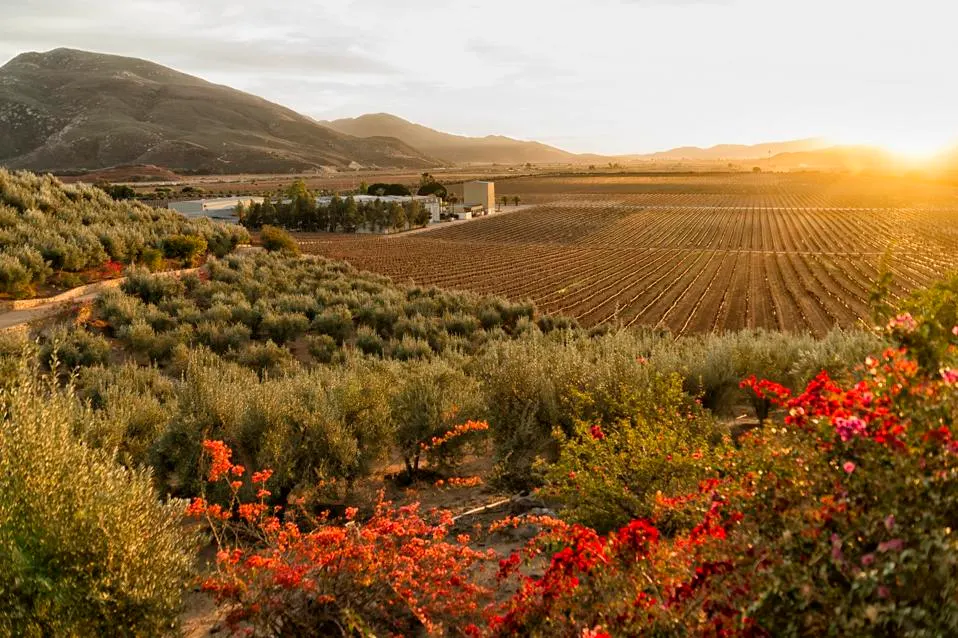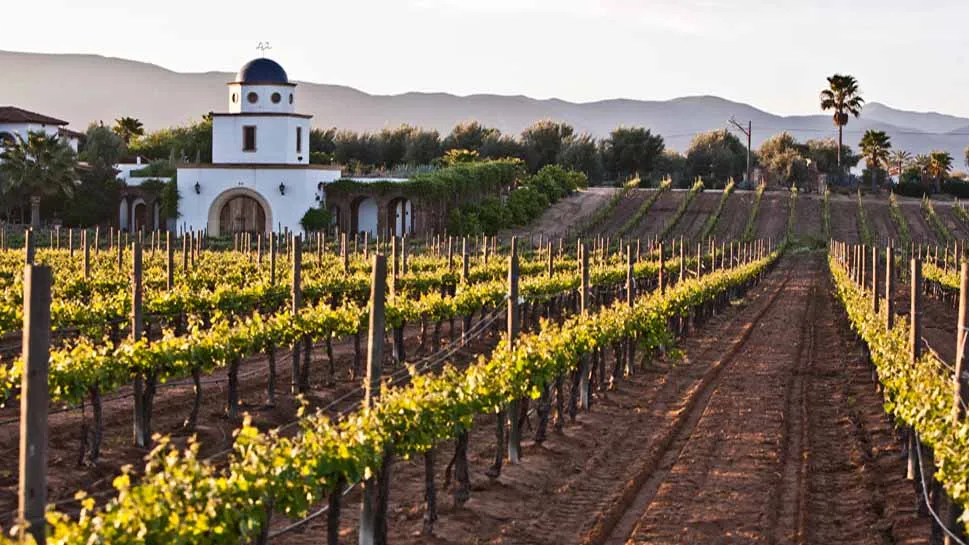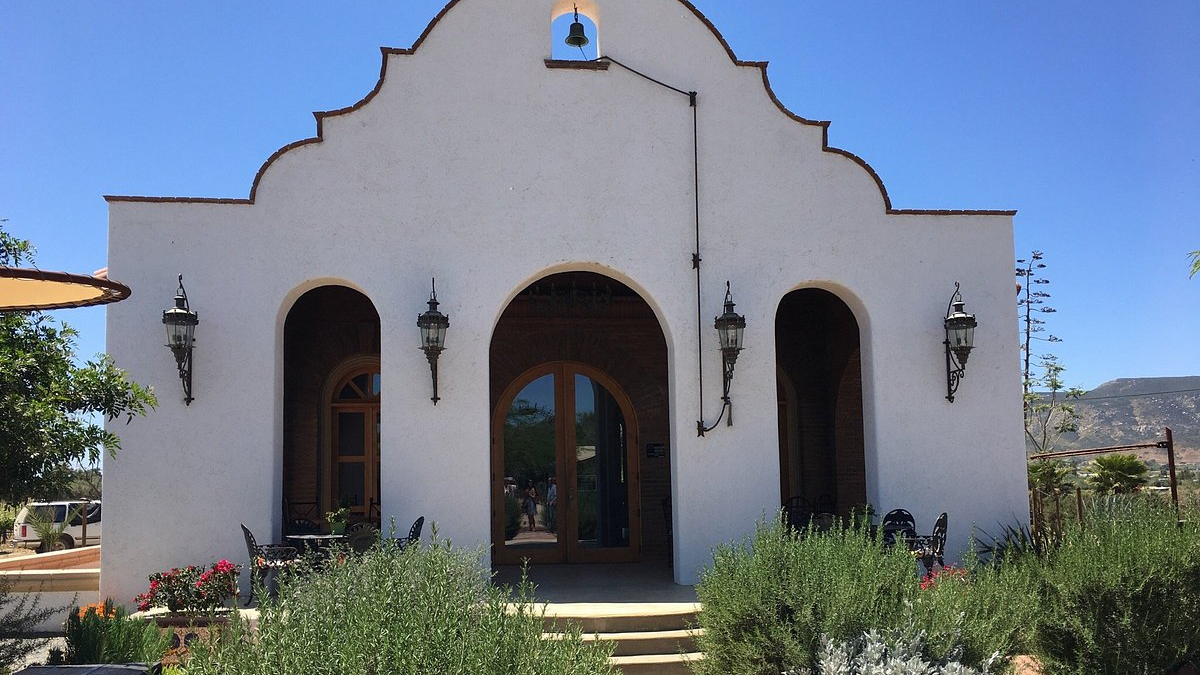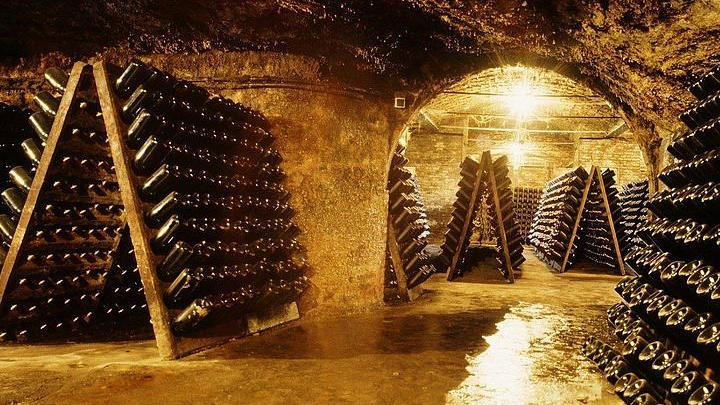
Introduction: A History Uncorked
Mexico’s winemaking story is nearly as old as the country itself. In fact, Mexico is the oldest wine-growing region in the Americas, with vineyards first planted in the early 16th century after the Spanish conquest. Hernán Cortés, the Spanish conquistador, ordered settlers to plant vines as early as 1524, recognizing that New Spain’s soil and climate could yield excellent grapes. By 1574, Mexico was producing its first recorded wines, making it the cradle of winemaking in the New World.
However, success came with challenges. Mexican wines flourished so much that they threatened Spanish exports. In response, King Charles II of Spain banned commercial wine production in Mexico in 1699, limiting winemaking to sacramental purposes. This decree stunted Mexico’s wine industry for over a century.
After Mexico gained independence in 1821, those old restrictions vanished and viticulture slowly rebounded. European immigrants in the 19th century – from Spanish missionaries to Italian and French settlers – brought winemaking expertise that helped revive Mexican vineyards. The Porfiriato era and subsequent Mexican Revolution caused further setbacks, but pockets of production persisted, notably in Parras de la Fuente, Coahuila, home to Casa Madero (est. 1597) – the oldest continuously operating winery in the Americas. By the late 20th century, Mexico’s wine industry was blossoming again. Pioneering wineries in Baja California and elsewhere began focusing on quality over quantity, marking the start of a modern renaissance in Mexican wine. Since the 1980s, Mexican wines have steadily risen in quality and reputation, winning awards at international competitions and earning the respect of oenophiles worldwide.
Today, Mexico’s wine scene is a dynamic fusion of old and new. Centuries-old haciendas coexist with boutique modern wineries, and winemakers blend historic techniques with cutting-edge innovation. From robust reds born of Baja California’s sun-drenched valleys to crisp sparkling wines produced in the high plains of Querétaro, Mexican wine has evolved into a diverse tapestry that surprises many first-time tasters.
"Mexican wine is not just an emerging trend—it’s a renaissance of a long-standing tradition. The depth, complexity, and character of these wines are finally getting the recognition they deserve on the world stage." – Jancis Robinson, Wine Critic
The Emergence of Mexico as a Global Wine Destination
For decades, Mexican wine flew under the radar, overshadowed by the country’s legendary tequila and beer. That’s no longer the case. In recent years, Mexico’s wine regions have gained international recognition and acclaim, drawing comparisons to the world’s top wine destinations. “Move over Napa!” wrote one travel publication, noting that Valle de Guadalupe – the heart of Baja California’s wine country – “is demanding critics’ attention.” Indeed, Valle de Guadalupe has transformed into a must-visit region often dubbed “the Napa of Mexico.” This valley’s Mediterranean-like climate, cooled by Pacific breezes, produces 70–90% of all Mexican wine.
While Baja leads the charge, it’s not the only region putting Mexico on the world wine map. In Central Mexico, the high-altitude vineyards of Querétaro and Guanajuato are also making waves. Querétaro’s semi-arid plains (around the towns of Tequisquiapan and Ezequiel Montes) have emerged as Mexico’s sparkling wine capital, thanks to the Spanish cava house Freixenet establishing a winery there in the 1980s. Further west in the state of Guanajuato, a historic silver-mining region is now producing gold in the form of world-class wines.
In 2024, Mexico reached a significant milestone by participating in the prestigious Concours Mondial de Bruxelles, where its wines earned a remarkable 152 medals out of nearly 7,500 entries from 42 countries. This achievement placed Mexico among the top five countries in the competition. Notably, a Mexican Grenache Gran Reserva 2019 from Bodega Dos Búhos in San Miguel de Allende earned a coveted Grand Gold.
"The quality of Mexican wines has skyrocketed in the past decade. The terroir is unique, the winemakers are fearless, and the results are spectacular. If you haven’t tried a bottle yet, you’re missing out.” – James Suckling, Wine Critic
Contemporary Developments in Mexican Wine
Mexico's wine industry has experienced significant growth in recent years, reflecting a renewed interest in viticulture and wine consumption. Over the past two decades, per capita wine consumption has increased sixfold, reaching approximately 1.3 liters. This surge indicates a burgeoning domestic market and a cultural shift towards wine appreciation.
The country's wine production is concentrated in several key regions, each contributing uniquely to Mexico's diverse wine profile:
- Baja California: Accounting for about 90% of Mexico's wine production, this region encompasses areas such as Valle de Guadalupe, Valle de Calafia, and Valle de Santo Tomás. The Mediterranean-like climate and diverse soils support a variety of grape varietals, including Barbera, Tempranillo, and Chenin Blanc.
- La Laguna (Coahuila and Durango): Known as the oldest winemaking area in Mexico, the Parras Valley in this region benefits from a unique microclimate with warm days and cool nights, ideal for cultivating Bordeaux varietals like Cabernet Sauvignon, Shiraz, Merlot, and Tempranillo.
- Central Mexico (Querétaro, Zacatecas, and Aguascalientes): Vineyards here are situated at elevations around 6,500 feet, with a focus on sparkling wines, as well as varietals such as Sauvignon Blanc, Cabernet Sauvignon, and Pinot Noir. The semi-arid climate and calcareous soils provide favorable conditions for viticulture.
In addition to these established regions, emerging areas like Chihuahua and Sonora are gaining recognition for their unique terroirs and quality wine production.
Sustainability has become a focal point in Mexican viticulture. Wineries are increasingly adopting organic and biodynamic farming practices, reflecting a commitment to environmental stewardship. Innovative water management techniques are also being implemented, particularly in arid regions, to conserve water while maintaining grape quality.
While Mexico is renowned for its production of international grape varieties, there is a growing interest in cultivating indigenous grapes. The Mission grape (Listán Prieto), historically significant as one of the first planted in the Americas, is experiencing a resurgence in some Mexican vineyards, adding a unique dimension to the country's wine offerings.
The development of wine tourism has significantly bolstered the industry's economic impact. Regions like Valle de Guadalupe offer wine routes and annual festivals that attract international visitors. The fusion of Mexican cuisine with local wines in gourmet restaurants enhances the gastronomic appeal for tourists, providing a comprehensive cultural experience.
In summary, Mexico's wine industry is experiencing a renaissance, characterized by increased domestic consumption, diverse and expanding wine regions, a commitment to sustainable practices, a renewed interest in indigenous grape varieties, and a thriving wine tourism sector. These developments collectively contribute to the country's growing reputation on the global wine stage.
“Mexico’s wine consumption has surged in the past two decades, driven by a growing middle class, evolving consumer preferences, and an increasing appreciation for domestic wines. With demand outpacing local production, the industry is rapidly expanding to meet the needs of a new generation of wine enthusiasts.” – Mexican Wine Council
San Miguel de Allende’s Role in Wine Tourism
San Miguel de Allende, in the state of Guanajuato, has long been beloved for its romantic Old-World ambiance. Cobblestone streets lined with bougainvillea, magnificent baroque architecture, and a vibrant arts scene have all contributed to its fame as a cultural and luxury travel hotspot. Now, to the delight of oenophiles, San Miguel de Allende is also emerging as a premier wine destination that marries its cultural charm with eno-tourism.
Surrounded by the rural landscapes of Guanajuato’s highlands, San Miguel sits at the center of a burgeoning wine region often referred to as the “Bajío Wine Circuit.” Numerous boutique vineyards have opened within an hour’s drive of the city, capitalizing on the area’s terroir and the steady stream of tourists. In particular, Viñedo Dos Búhos has put San Miguel on the wine map, producing organic, small-batch wines with an artistic and philosophical touch. Their wines, which include an award-winning Grenache Gran Reserva, exemplify the region's potential for fine reds and elegant whites.
Top 7 Vineyards in Mexico
Mexico's wine industry boasts a rich tapestry of vineyards that exemplify the nation's viticultural excellence. The following seven vineyards have been selected for their historical significance, innovative winemaking practices, and contributions to elevating Mexican wines on the global stage. Each offers a unique expression of Mexico's diverse terroirs and a commitment to quality that distinguishes them in the wine community.

1. Casa Madero – Parras de la Fuente, Coahuila
Established in 1597, Casa Madero holds the distinction of being the oldest winery in the Americas. Situated at an elevation of approximately 5,000 feet, the high-altitude terroir provides a unique microclimate conducive to viticulture. The winery cultivates a diverse array of grape varieties, including Syrah, Chenin Blanc, Cabernet Sauvignon, and Tempranillo. Their winemaking process emphasizes controlled fermentation temperatures and meticulous vineyard management to ensure optimal grape quality. Casa Madero's commitment to blending traditional techniques with modern enological practices has solidified its reputation for producing wines that reflect both heritage and innovation.

2. Monte Xanic – Valle de Guadalupe, Baja California
Founded in 1987, Monte Xanic is recognized as Mexico's first boutique winery. Located in the Valle de Guadalupe, the winery benefits from a Mediterranean-type microclimate, with significant diurnal temperature variations that enhance grape complexity. Monte Xanic employs a mix of traditional and modern techniques, including night harvesting to preserve grape integrity and the use of micro-oxygenation to stabilize wines. Their portfolio features Bordeaux varieties such as Cabernet Sauvignon, Merlot, and Malbec, as well as whites like Sauvignon Blanc and Chardonnay. The winery's dedication to quality and innovation has been instrumental in elevating the status of Mexican wines on the international stage.

3. Adobe Guadalupe – Valle de Guadalupe, Baja California
Adobe Guadalupe is renowned for its unique approach to winemaking, blending Mediterranean and Mexican styles to create distinctive wines. The vineyard focuses on red blends, utilizing grape varieties such as Tempranillo, Merlot, and Cabernet Sauvignon. Their winemaking process emphasizes minimal intervention, allowing the natural characteristics of the grapes to shine through. The estate also incorporates sustainable practices, reflecting a commitment to environmental stewardship. Adobe Guadalupe's wines are celebrated for their balance, complexity, and expression of the Valle de Guadalupe terroir.

4. Viñedo Dos Búhos – San Miguel de Allende, Guanajuato
Viñedo Dos Búhos stands as a testament to the art of organic and artisanal winemaking in Mexico's high plateau. Situated at an elevation of 2,000 meters at the base of the Los Picachos mountains, the vineyard benefits from a unique microclimate characterized by a mean temperature between 16°C and 22°C, with moderately warm summers and cool winters. The soils are shallow, composed of silty clay and fine neo-volcanic gravel, providing excellent drainage and contributing to the distinct minerality of the wines.
The vineyard cultivates over 15 organically produced grape varieties, including Tempranillo, Cabernet Franc, Aglianico, Sauvignon Blanc, and Moscato Giallo. The vines are meticulously trained using the traditional Guyot method, resulting in a low canopy that promotes adequate air circulation and sunlight exposure—key factors in preventing disease and ensuring optimal ripening.
In the winery, Dos Búhos employs traditional winemaking techniques with a focus on texture, structure, and complexity, while allowing the fruit to shine with minimal intervention. All wines are crafted from hand-harvested organic grapes, with limited editions of unique expressions such as their orange wine, produced using ancient methods involving extended skin contact and aging in stone or clay amphorae for up to three years.
Fermentation is carried out with native yeasts, reflecting a commitment to authenticity and terroir expression. The winery's barrel room houses a selection of French oak barrels, where wines undergo aging to develop depth and complexity. Dos Búhos' dedication to organic practices extends beyond the vineyard, as they experiment with sustainable construction methods such as adobe and bale for their facilities.
The resulting wines are a true reflection of the land and climate of San Miguel de Allende, transmitting the passion and expertise of the Dos Búhos team. Each bottle reveals unique aromas and flavors, offering a sensory journey that captures the essence of their high-altitude terroir. For wine enthusiasts seeking authentic and thoughtfully crafted Mexican wines, Viñedo Dos Búhos presents an exceptional experience that harmoniously blends tradition, innovation, and a profound respect for nature.

5. El Cielo – Valle de Guadalupe, Baja California
El Cielo is distinguished by its commitment to producing a wide variety of high-quality wines, leveraging the diverse microclimates and soils of the Valle de Guadalupe. The winery employs both traditional and modern winemaking techniques, including temperature-controlled fermentation and careful oak aging, to craft wines that are both expressive and balanced. El Cielo offers a "blend your own wine" experience, allowing enthusiasts to engage directly with the art and science of winemaking under the guidance of certified sommeliers.
6. Freixenet México – Querétaro

Freixenet México specializes in the production of sparkling wines, utilizing the traditional méthode champenoise to achieve fine bubbles and complex flavors. The vineyards are situated at elevations around 2,000 meters, where the semi-arid climate and calcareous soils provide ideal conditions for grape varieties such as Macabeo, Xarel·lo, and Parellada. The winery's extensive underground cellars maintain consistent temperatures, essential for the secondary fermentation and aging processes that define their sparkling wines. Freixenet México's dedication to quality and tradition has established it as a leader in the country's sparkling wine production.
7. Cuna de Tierra – Guanajuato

Cuna de Tierra, established in the early 1990s in Guanajuato's Independence Valley, spans 30 hectares at an elevation of 2,000 meters, benefiting from a microclimate ideal for balanced grape maturation. The vineyard's calcareous and alluvial soils provide excellent drainage, contributing to the distinct minerality of their wines. They cultivate varieties such as Cabernet Sauvignon, Merlot, Syrah, and Tempranillo, employing meticulous vineyard management to ensure high-quality fruit. In the winery, a blend of traditional and modern techniques is used, including fermentation in temperature-controlled stainless steel tanks and aging in both French and American oak barrels. The architectural design, by Ignacio Urquiza Seoane and Bernardo Quinzaños Oria, harmoniously integrates with the surrounding landscape, reflecting a commitment to sustainability and respect for the terroir.
Why You Should Start Putting Mexican Wines in Your Cellar
Mexico’s rise as a world-class wine producer is no longer a well-kept secret—it’s a movement. From the sun-drenched valleys of Baja California to the high-altitude vineyards of Guanajuato and Querétaro, Mexican winemakers are crafting bottles that deserve a place on the global stage. But beyond the awards and accolades, what makes vino Mexicano truly special is its ability to tell a story—a story of resilience, reinvention, and a deep connection to the land.
Adding Mexican wines to your cellar isn’t just about expanding your collection; it’s about discovering a new frontier of flavors and experiences. It’s about uncorking a bold Nebbiolo that rivals its Italian cousins, a crisp, mineral-driven Chardonnay that surprises with its finesse, or a vibrant Grenache that reflects the creativity and artistry of its maker. It’s about opening a bottle that carries the spirit of centuries-old haciendas, the innovation of young vintners, and the energy of a country that is redefining its wine identity.
And there’s no better way to experience this renaissance than by immersing yourself in it. Whether you’re strolling through the contemporary vineyards of Valle de Guadalupe, savoring a barrel-aged rosé in San Miguel de Allende, or raising a glass of sparkling Querétaro cava under a starlit sky, Mexico offers a wine journey unlike any other—one that blends history, culture, and adventure in every sip.
So the next time you’re looking for a wine that surprises, delights, and transports you somewhere new, look beyond the usual regions. Seek out the depth of Mexican reds, the elegance of its whites, and the innovation behind its blends. Invest in bottles that don’t just age well but also tell the story of a wine country on the rise. Because in a few years, when Mexico’s name is spoken in the same breath as Napa, Bordeaux, or Mendoza, you’ll be glad you were ahead of the curve.
The future of wine is being written in Mexico. It’s time to pour a glass and be part of it. ¡Salud!
